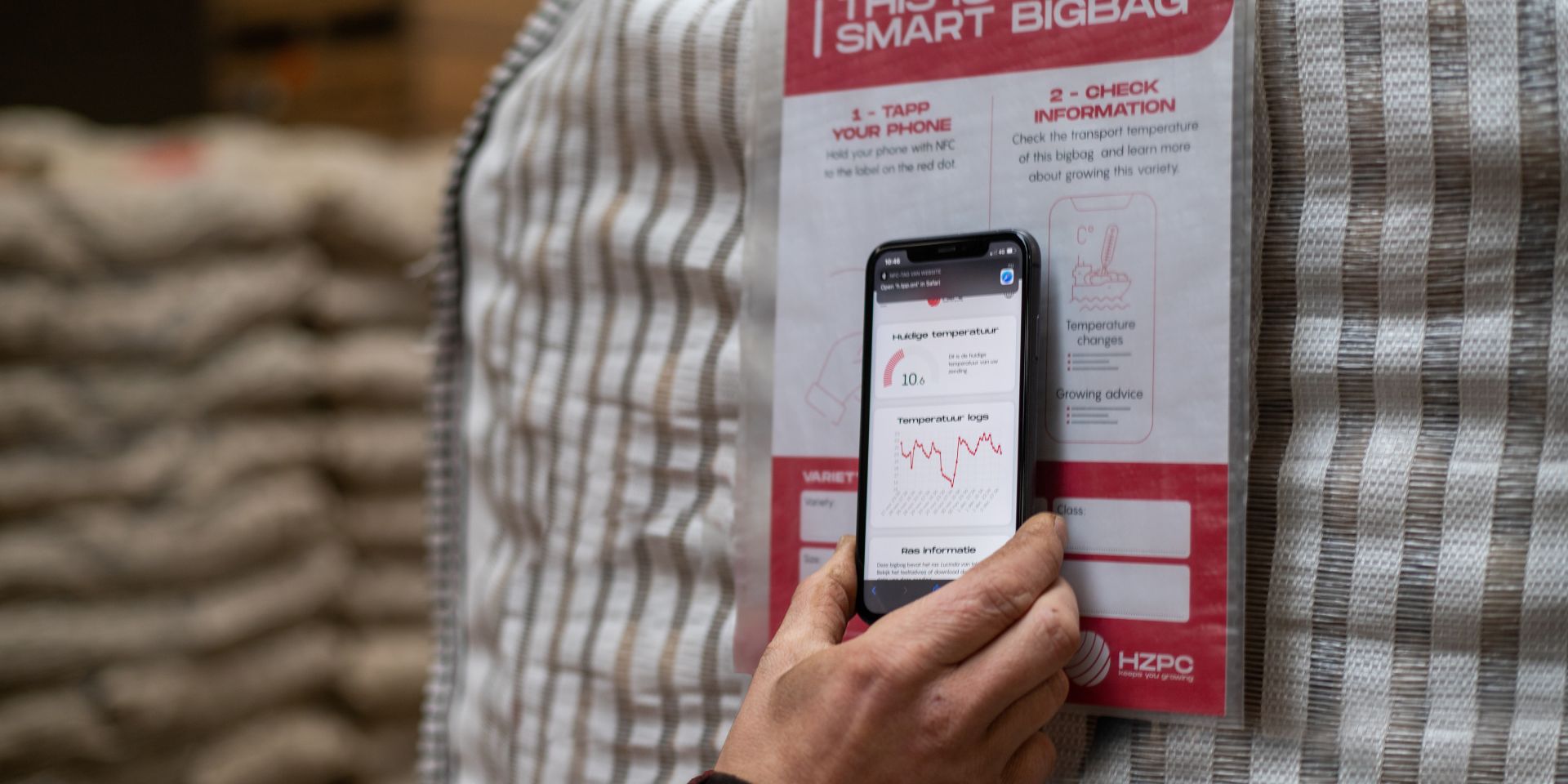
Smart bigbags also measure temperature fluctuations
Many seed potatoes can spend weeks in transit to customers in all parts of the world, sometimes involving transshipment between trucks, trains and boats. It would be fantastic to be able to gain insights into the conditions during shipment, when part of the load is equipped with a micro-sensor to read the temperatures. This is why we look forward to the smart bigbag pilot.
The pilot is a follow-up to a trial with 80 smart bigbags which were supplied to Spain last year. A previous article explained how the large packages were fitted with a label and chip which can be read off by buyers, using their smartphones, to access growing advice in their own language. The trial was a success and was therefore scaled up at the end of last year. ‘To find out whether the downloading of variety information runs smoothly across the board, this season we sent 1,100 smart bigbags to Bulgaria, France, Italy, Portugal, Serbia, Spain and Turkey’, explains marketing specialist Hans Langedijk.
Temperature sensor
The new element of this pilot is that 100 of the bigbags were also fitted with a smart label which contains a temperature sensor. Once the lots are on their way, fluctuations in temperature can impact upon the quality of the potatoes. HZPC is interested in finding out about the conditions during transport, so that any complaints about the seed potatoes thereafter can be tracked and investigated. After the first bigbag trial, a developer called Niels Postma from Tapp.online to ask whether it would be possible to integrate a temperature sensor into the smart labels. He set to work and figured out how to add a micro-sensor into the paper, along with the NFC chip (near field communication) which could read off temperatures.

Link to data platform
‘The smart labels with a download function, which were used during the first trial, work without any power supply’, explains Postma. ‘It’s only when you hold a smartphone against the magnetic field in the NFC chip that you can read off the information. We are now going one step further with an integrated micro-sensor. There are minuscule printed batteries in the paper which generate tiny power surges every now and then. The temperature is then checked and saved at a pre-set interval. The data we generate as a result can be visualised via a supported platform. HZPC can check the digital map to see precisely where the bigbags are located, read off any temperature fluctuations, and check whether the client has accessed the growing advice with their smartphone.’
Circular product
The delivery of smart bigbags in the pilot started in December and will continue until April. The results will then be evaluated. ‘We are investing in this pilot as we would like to share expertise via growing advice and because we hope to gain more insights into transport conditions’, explains Langedijk. ‘In this pilot, we are focussing on temperature but, if this goes well, we are also thinking in terms of sensors that measure atmospheric humidity and CO2 in the future.’ According to Postma, this is entirely feasible. He developed the intelligent paper labels as he wanted to propose something to combat the many plastic data-loggers. ‘Paper is a sustainable product; it can be recycled easily and I prefer to work with circular paper that is made from agricultural waste.’
The ‘smart bigbags’ pilot is so innovative that Niels Postma was invited to attend CES (the largest tech fair in the world) this year (online) to explain what he has been doing. The smart bigbags have also been nominated for the innovation award from Potato Europe.
